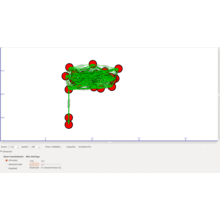NS3 SIMULATOR PROJECT TITLE
An Approach to Sensor Network Throughput Enhancement by PHY-Aided MAC
Low power sensor networks with communication enabled by WiFi are expected to be widely deployed. A major challenge is collecting event-driven uplink data from a large number of low-power sensors with low latency. In WiFi, the access point (AP) typically polls nodes individually to schedule uplink transmission times, resulting in a large latency. In this paper, we present a physical (PHY) layer-aided medium access control (MAC) framework to enhance the uplink throughput of sensor data traffic. In the approach, the acknowledgements from the sensor nodes to the poll message are parallelized.
By detecting the parallel acknowledgement, the AP knows which nodes have data to send and allocates channel resources by sending a pull message. This approach is referred to as the probe and pull MAC (PPMAC) mechanism. Our scheme is based on maximizing the achievable throughput of PPMAC by optimizing the PHY layer components. More precisely, we investigate the parallel acknowledgement detector design problem and develop a non-convex optimization framework that maximizes the PPMAC throughput by optimizing the parallel acknowledgement detection statistics. Numerical examples illustrate that PPMAC outperforms the point coordination function (PCF) and distributed coordination function (DCF) mechanisms, standardized in IEEE 802.11, in terms of the achievable throughput and the overhead.

 Click Here to watch our latest output video using NS3 simulator
Click Here to watch our latest output video using NS3 simulator  Click Here to watch our latest projects screenshots using NS3 simulator
Click Here to watch our latest projects screenshots using NS3 simulator